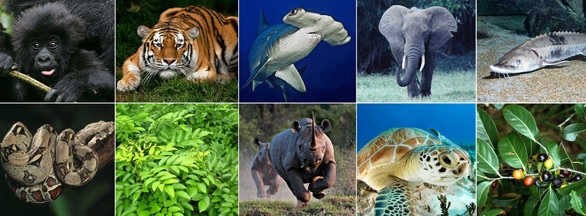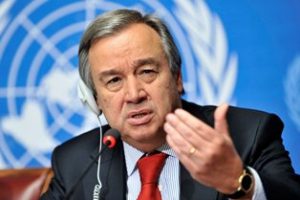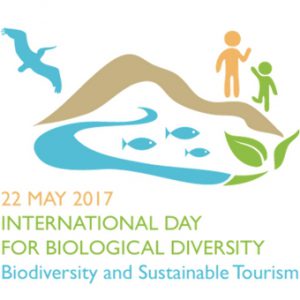CITES meets as ‘wealth’ is replacing ‘health’ as a driver of wildlife consumption

Geneva :The conservation and management priorities for a myriad of wild plants and animals are taking centre stage at the 65th meeting of the Standing Committee of the Convention on International Trade in Endangered Species of Wild Fauna and Flora (CITES), being held in Geneva from 7 to 11 July , 2014 . Among the high priority issues for discussion are the large scale illegal killings of elephants for their ivory and rhinos for their horns, as well as a concerning increase in the illegal trade in Asian big cats.
“We are seeing a disturbing shift in demand for some species from health to wealth – driven by the motivation of displaying new wealth rather than by use in traditional medicine. This is most evident with the use of rhino horn and tiger parts. This is part of a shift from traditional culture-related consumption to conspicuous consumption, which is also affecting many other species pressured by illegal trade. Illegal trade in ivory, however, appears to be largely profit-motivated, as a means of investment for the purpose of generating wealth” said John E. Scanlon, Secretary-General of CITES.
A record number of 400 participants from all over the world are attending, including observers from Parties, intergovernmental bodies, the private sector and non-governmental organizations specialized in wildlife conservation and international trade. CITES will review how far States have got since major decisions were taken by CITES Parties to combat illegal trade in Bangkok last March, and to determine what further steps are necessary. The compliance measures and review mechanisms available under CITES are unique to this Convention.
The CITES Standing Committee meets every year to oversee the implementation of rules for the international trade in protected wildlife agreed between the 180 CITES member States, which meet once every three years the last meeting being held in Bangkok in March 2013.
Elephants
The Committee will consider a new report that analyses data from four different authoritative sources: the CITES programme on Monitoring the Illegal Killing of Elephants (MIKE), IUCN, the Elephant Trade Information System (ETIS) managed by TRAFFIC, and the CITES trade database managed by the UNEP World Conservation Monitoring Centre (UNEP-WCMC).
These authoritative sources of information have shown a very close correspondence between trends in elephant poaching and trends in large-scale ivory seizures, detecting essentially the same patterns at different points in the illegal ivory trade chain. Recommendations under consideration to improve the situation include: further implementing the African elephant action plan; improving controls for domestic ivory markets; enhancing stronger collaboration between African and Asian countries to combat ivory smuggling; and undertaking international enforcement actions coordinated by the International Consortium on Combating Wildlife Crime (ICCWC).
Precious timber
The Committee will also analyse the levels of illegal trade in precious timber and the enforcement measures taken by Customs in several transit countries. Over 4,000 tons of rosewood suspected to have been illegally exported from Madagascar were seized in various countries (Nov. 2013 and April 2014). Despite the zero export quota, the scale of the illegal logging and trade from Madagascar remains at alarming levels. Timber is illegally exported by boat from Madagascar using various routes, primarily destined for Asia.
Pangolins
Pangolins are quickly moving up on the international agenda. Pangolins, also referred to as a scaly anteater, are nocturnal armoured mammals, covered with large, thick scales. Their skin and scales are used for fashion products and in traditional medicine, while their meat is regarded as a delicacy. Two tons of pangolins were recently confiscated in Hong Kong. Data from seizures of frozen pangolins show an escalating rate of illegal trade, mostly from Africa to Asia.
Rhinos
The Committee will also analyse next week the progress made in fighting rhino poaching and illegal trade in rhino horn. Poaching is still far too high. Some discussion is expected to take place between South Africa, Vietnam and Czech republic where several seizures showed questionable trophy licenses. Vietnam was identified by CITES reports as the primary destination country, and they will present their efforts to control the illegal markets and reduce illegal trade.
Safe wildlife trade
Declared trade in one single species of Asian snakes involves over half a million skins per year. Illegal and unreported trade in Asian python skins puts snake populations under pressure. Confusion of skin origin facilitates the illegal trade in snake skin and proposal on improving traceability systems to link the entire supply chain, from the harvester to the producer and finally the consumer, to CITES permits system. Fashion industry is also keen on this and some luxury brands are expected to attend the meeting.
Sustainability review
The Committee will examine the export levels for a myriad of animals and plants. This ‘Review of Significant Trade’ is a unique compliance mechanism developed by CITES to verify whether species are traded at sustainable levels. Among the cases under review are encouraging developments regarding the management of dolphins in Solomon islands.
Big focus on tigers and other big cats
The Committee will also discuss measures to tackle illegal trade in tigers and other big cats.
Tigers
Seizures of live tigers are increasing in Asian big cat range States, significant number occurred since 2010, with 61 animals seized from 2010-2012, vs 62 from 2000-2009. Skins are the most commonly seized item for this species. The number of live animals and frozen bodies detected reflects an increase in illegal trade in recent years. Based on reports received from China, Pakistan, Thailand, the United Kingdom of Great Britain and Northern Ireland and Viet Nam. The European Commission on behalf of the EU and Member States, submitted a compilation of seizures of tiger products. African lions are increasingly being used in the parts and derivatives trade.
Seizure of tiger specimens increased in Southeast Asia in recent years, of 61 live tigers seized in the period 2010-2012, 74% were confiscated in three South-East Asian countries – the Lao People’s Democratic Republic, Thailand and Viet Nam. Concerns about presence of tiger-breeding facilities in these countries where there are small numbers of wild tigers. Seizures of tiger specimens in Indonesia account for 20% of all such seizures in range States from 2010 to 2012.
Significant work is being carried out to conserve Asian big cats and combat illegal in Asian big cat specimens, but illegal trade remains an ongoing threat to Asian big cats and a challenge for law enforcement. Crimes on Asian big cat specimens cannot be addressed by one authority or one country alone. Strong cooperation following a multi-disciplinary approach amongst range, transit and destination countries is vital
Cheetah
The cheetah, Acinonyx jubatus, the world’s fastest running land animal, is included in CITES Appendix I since 1975, Annual export quotas for live specimens and hunting trophies are granted as follows: Botswana: 5; Namibia: 150; Zimbabwe: 50. Declining population of fewer than 10,000, mostly in the savannahs of Africa, with a very small Asiatic population in Iran. The largest cheetah population is in Southern Africa, mostly on commercial livestock and game ranching areas. Cheetahs face a variety of pressures to their existence in the wild, including illegal international trade, habitat loss, bush-meat hunting of their prey base, and conflict with livestock owners.
Legal trade: From 2002-2011, wild cheetah annual legal trade averaged 153, mainly hunting trophies from Namibia. The annual average for captive-bred live animals is 88 , mainly from South Africa. Overall, the CITES quota system seems to operate in a satisfactory manner. South Africa has become the world’s biggest exporter of cheetahs recorded as captive-bred, and is the only country with CITES-registered commercial Appendix I breeding operations for cheetahs.
There is concern that live-trapped wild animals are illegally entering the legal captive export trade. Little information is currently available on the illegal trade in live cheetahs, cheetah skins or other specimens in northern, western and central Africa, or in the Islamic Republic of Iran – home to the last wild cheetah population in Asia. There is also a high mortality rate (70%) among known confiscations in Somaliland and Ethiopia. Cheetahs kept in inappropriate conditions have low survival rates according to forensic examinations and experienced veterinarians
Africa since January 2012, 153 of them alleged poachers, and the others couriers, buyers or exporters.
Enforcement, innovative finance, legislation and reporting
Additionally, the Committee will: analyse enforcement deficiencies in several countries and consider appropriate compliance measures; consider innovative financing solutions, including access to GEF funding and the development of a private equity fund; review implementation of the Convention for captive-breeding and ranching operations; evaluate the status of national laws for the implementation of CITES; and, review Parties’ submission of national reports on CITES trade.
The National Legislation Project (NLP) is a compliance and technical assistance process unique to CITES, which was established in 1992. Its primary aim is the analysis of 180 Parties’ enabling and implementing legislation to regulate international wildlife trade and penalize illicit trafficking of wild animals and plants. See the chart with the current legislative status and the list of priority countries that are requested to adopt urgently CITES-related legislation.
For more information : http://cites.org/
July, 2014














